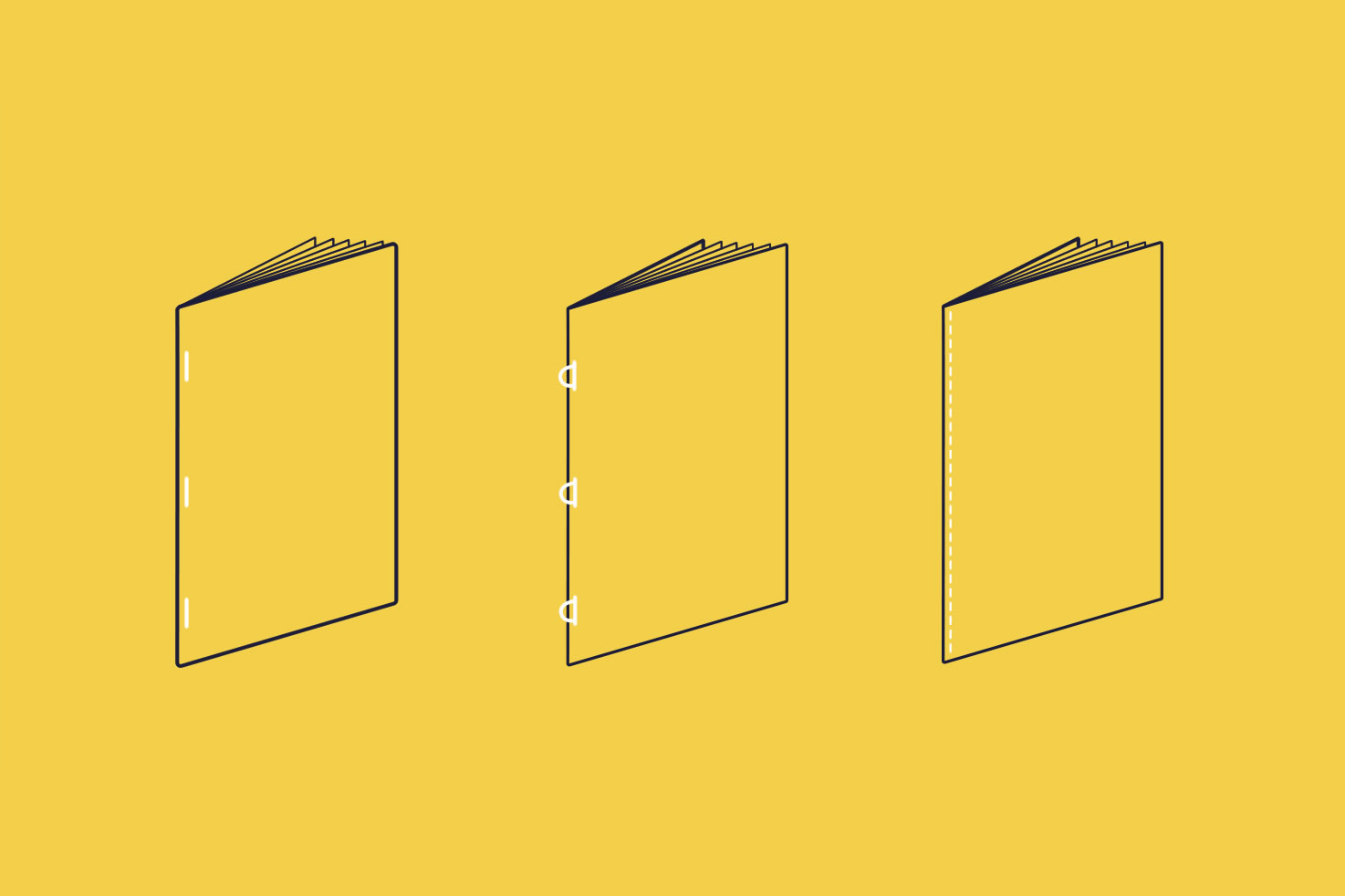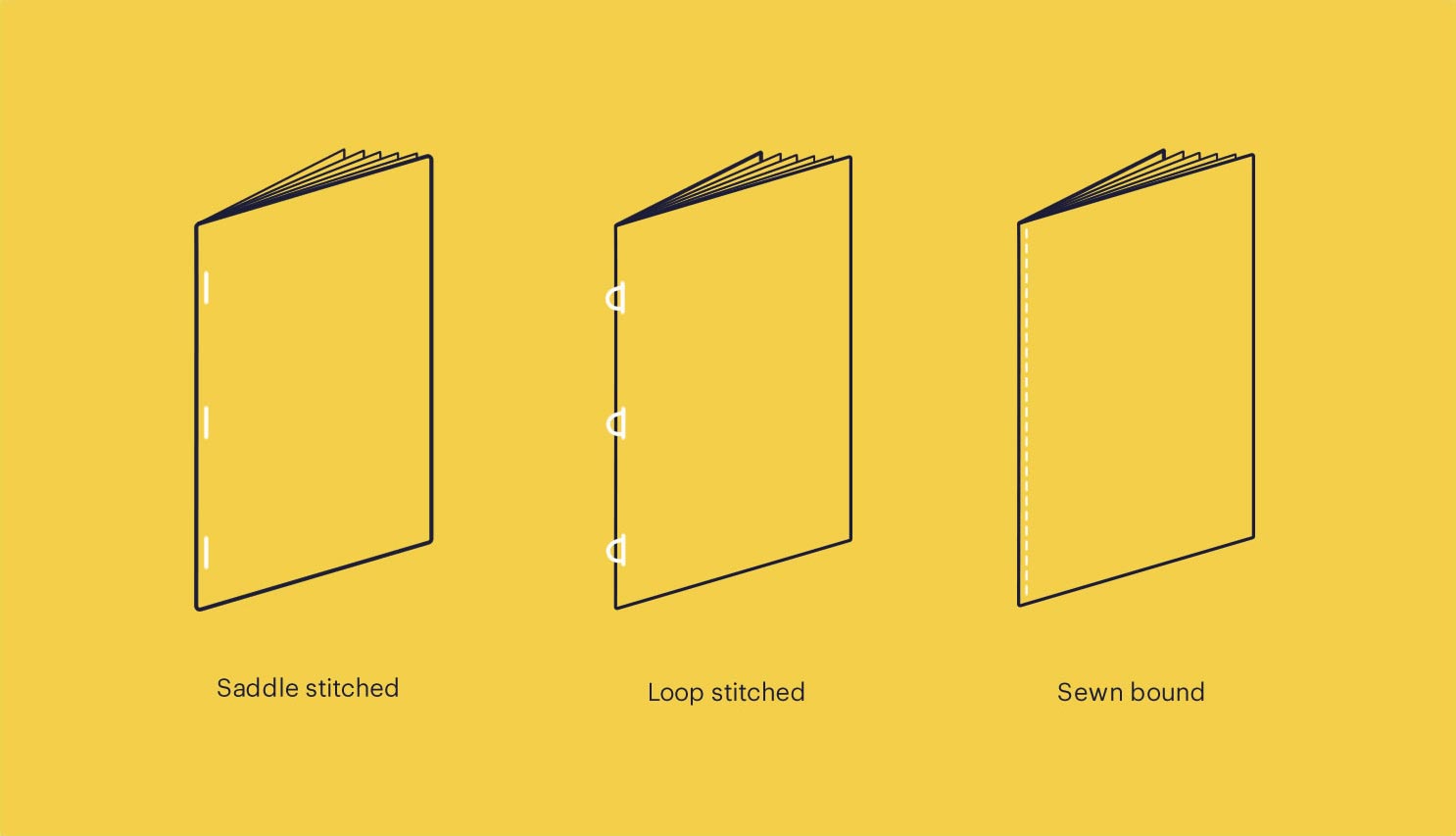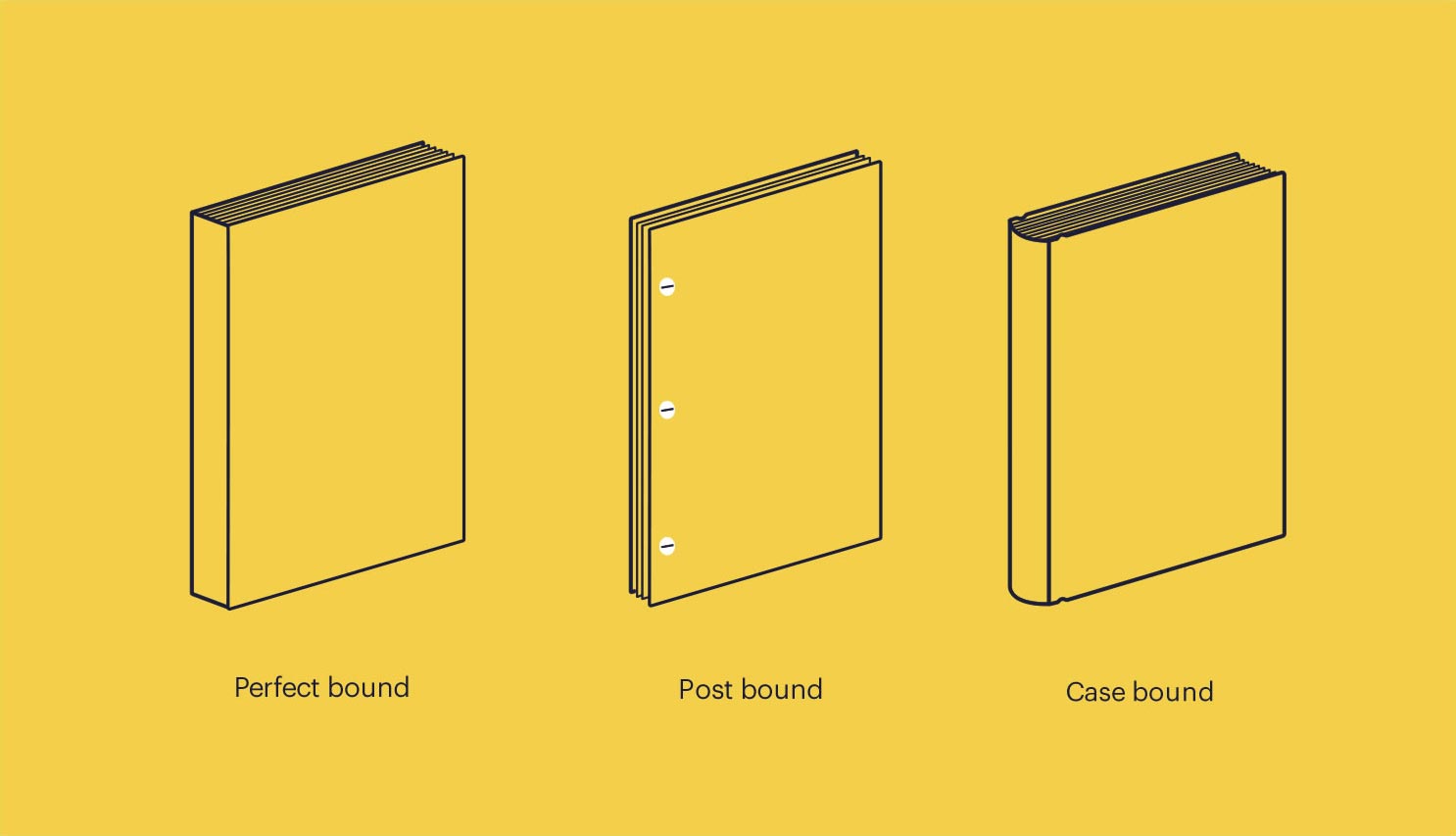The Salad guide to book binding
The type of binding you choose should be determined by three factors: function, aesthetic and budget. This guide will give you an insight into each binding technique, the cost, and suggest the best uses for each method.


Saddle stitched
This is the most common of all binding techniques. The pages are folded in half and bound using wire staples along the spine. This method is only suitable for a small quantity of pages, and can cause creep – when the inner pages move further away from the centrefold due to the paper thickness and number of pages.
Suitable for:
Small brochures, price lists and lookbooks.
8-80 pages
Cost: £
Loop stitched
Similar to saddle stitching, semi circle loops are created from the wire used to bind the booklet. The benefit of this type of binding is that it can be bound into a ring binder without having to drill holes in the brochure.
Suitable for:
Small brochures, booklets and price lists.
8-80 pages
Cost: £
Sewn bound
One of the most beautiful binding techniques, this is similar to saddle stitching, but the spine is bound using thread. There is a spectrum of coloured threads available to create a contrast or find an exact match to paper stock or a printed cover.
Suitable for:
Small brochures and lookbooks.
8-24 pages
Cost: ££££
Top tip:
Remember that the number of pages (also known as signatures) within a book or brochure must always be divisible by four, so that you don’t end up with blank pages at the back of the book.

Perfect bound
Commonly used for books and brochures with over 50 pages. Sections of pages are folded and cut, then glued along the spine and fixed to the outside cover.
Suitable for:
Books and large brochures.
50-250 pages
Cost: £££
Post bound
This technique is a less permanent form of binding. It involves using screw posts to bind single sheets to create a book. The book can be dismantled allowing you to add, remove or reorder pages with ease.
Suitable for:
Loose leaf brochures, books, portfolios and case studies.
16-400 pages
Cost: ££££
Case bound
The standard binding technique used for hardback books. The inner pages are sewn in sections then glued inside the hardback cover. It is one of the most durable of all the binding techniques, but also the most expensive.
Suitable for:
Books
60-400 pages
Cost: ££££





